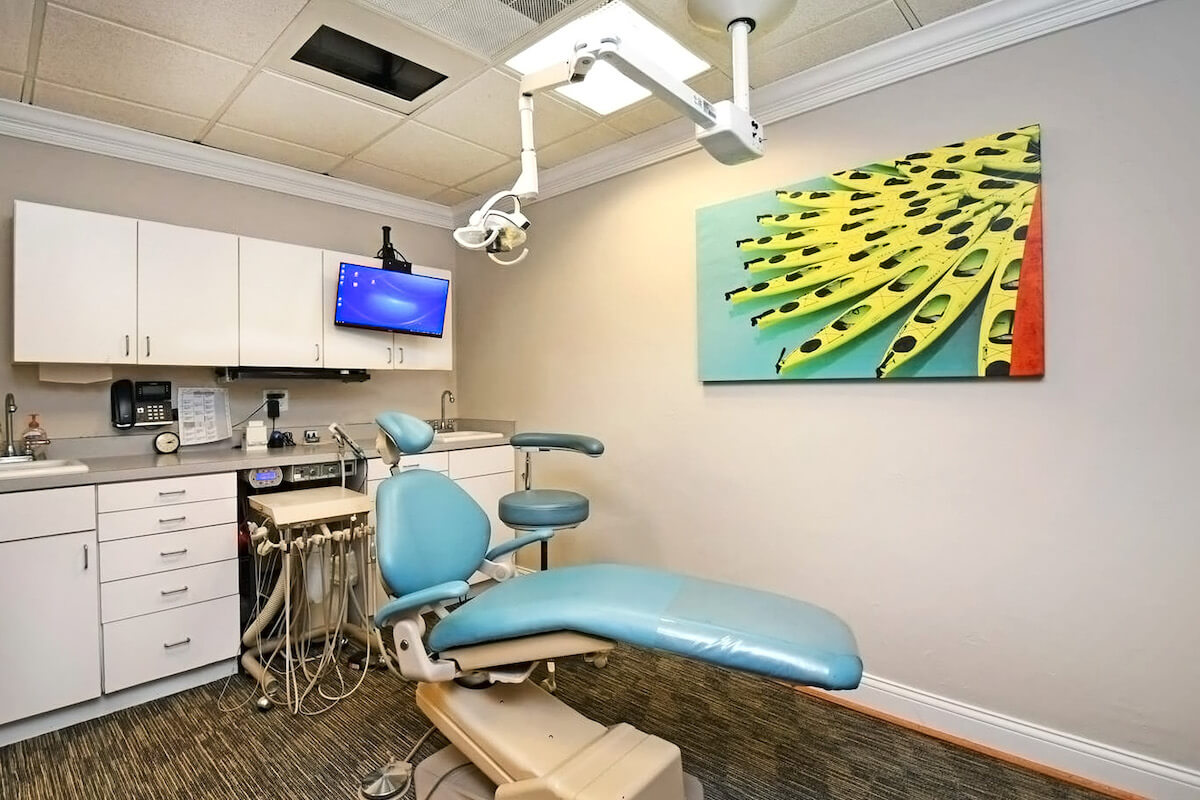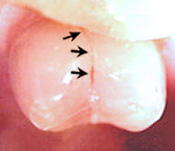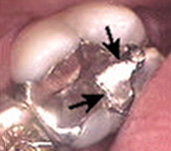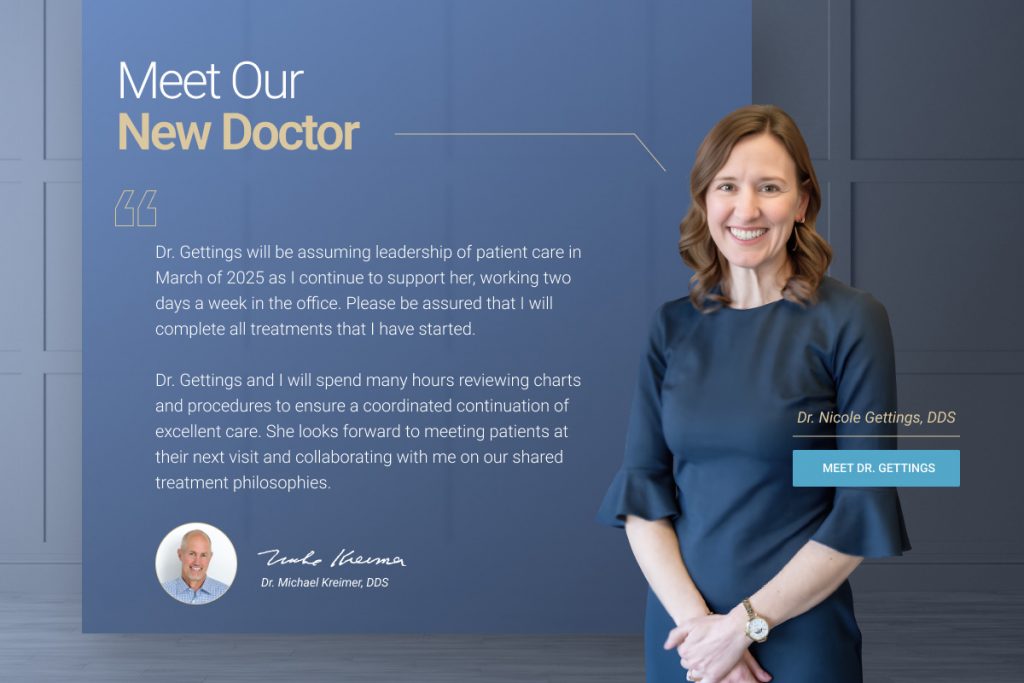Recognizing the Warning Signs of Dental Damage
Recognizing when you need a dental crown can save your tooth and prevent more extensive treatment later. Many patients from the Cincinnati, Mason, and Montgomery areas visit our practice after noticing concerning symptoms that indicate crown treatment is necessary. Understanding these warning signs helps you seek timely care before minor problems become major complications.
Don’t let concerning symptoms progress to painful problems. Call (513) 677-3656 today to schedule your consultation with our experienced dentists in Loveland.
Patient-Centered Care and Reviews for Michael Kreimer, DDS
Patients at Dr. Kreimer’s practice consistently praise the exceptional care and welcoming atmosphere, as highlighted by reviews like Danielle A.’s:
“I had the absolute best care with Dr.Kreimer and ALL of his staff!! I can’t say enough good things about everyone in the office!! You really feel like family, instead of just another “patient”. I have had some pretty bad experiences in the past with other dentists, but, everyone at the office-from the receptionists, Missy, and Dr.Kreimer all made me feel comfortable and put my mind at ease with my procedure!!! Thank you SO much!!! I will be referring anyone and everyone I know to your office!!!”
The practice’s focus on patient comfort is evident in their approach to easing anxieties, explaining procedures clearly, and creating a supportive environment. This dedication has earned them glowing reviews and a loyal patient base that trusts them for everything from routine checkups to complex dental procedures.

When Crowns Become Necessary
Dental crowns serve as protective caps that restore damaged teeth to full function and appearance. They become necessary when the tooth structure is compromised beyond what simple fillings can repair. Early recognition of crown-requiring conditions leads to better treatment outcomes and preserved natural teeth.
The decision to recommend a crown depends on several factors, including the extent of damage, tooth location, and your overall oral health. Dentists evaluate each situation individually to determine the most appropriate treatment. Crowns often represent the difference between saving a tooth and losing it entirely.
Severe Tooth Decay Requiring Crown Protection
Advanced tooth decay represents one of the most common reasons for crown placement. When cavities become too large for traditional fillings, crowns provide the necessary structural support. These situations require prompt attention to prevent tooth loss.

The pain may worsen when chewing or applying pressure to the affected tooth. Sweet foods and beverages can trigger intense discomfort. These symptoms indicate that the tooth’s protective enamel has been compromised significantly.
Visible Decay Signs: Dark spots, holes, or pits on tooth surfaces reveal advanced decay that requires crown treatment. These visible signs indicate that the cavity has progressed beyond simple filling repair. The affected tooth structure needs complete coverage and protection.
Food frequently gets trapped in these cavities, causing additional discomfort and bad breath. The rough, irregular surfaces make proper cleaning difficult. Crown placement eliminates these problem areas and restores smooth, cleanable surfaces.
Cracked and Fractured Teeth
Tooth cracks and fractures can result from trauma, grinding, or biting hard objects. These structural problems compromise the tooth’s integrity and require crown protection. Untreated cracks often lead to complete tooth failure.

Cracked teeth may be sensitive to temperature changes as well. Hot and cold substances can cause sudden, sharp pain that quickly subsides. This sensitivity pattern differs from decay-related discomfort and suggests structural tooth damage.
Visible Crack Lines: Hairline cracks on tooth surfaces or crowns may seem minor, but can indicate more extensive internal damage. These visible lines often extend deeper into the tooth structure than initially apparent. Professional evaluation determines whether crown treatment is necessary.
Some cracks create rough or jagged edges that irritate the tongue and cheeks. You might notice small cuts or sores on your tongue from contact with the damaged tooth. Crown placement smooths these problematic surfaces and prevents further injury.
Large Fillings and Their Limitations
Teeth with large fillings often require crown upgrades as the fillings age and weaken. Extensive fillings compromise the remaining tooth structure over time. Crown placement provides superior protection and longevity compared to large filling replacements.

You might notice food getting stuck where the filling used to seal properly. Temperature sensitivity can increase as the failing filling provides less insulation. These symptoms suggest that crown treatment would provide better protection and comfort.
Structural Weakness: Teeth with fillings occupying more than half the tooth surface become structurally compromised. The remaining natural tooth structure may crack under normal chewing forces. Crowns distribute these forces more evenly and prevent tooth fracture.
Multiple fillings in the same tooth create similar structural concerns. The tooth becomes weakened at multiple points, increasing fracture risk. Crown treatment eliminates these weak spots and provides uniform strength.
Post-Root Canal Crown Requirements
Root canal-treated teeth typically require crown protection due to structural changes that occur during treatment. The access hole created during root canal therapy weakens the tooth significantly. Crowns restore strength and prevent post-treatment fractures.
Root canal treatment removes the tooth’s nerve and blood supply, making it more brittle over time. These treated teeth become more susceptible to cracking and fracturing. Crown placement provides the reinforcement necessary for long-term success.
Cosmetic Crown Indications
Severe tooth discoloration that doesn’t respond to whitening treatments often requires crown coverage. Deep stains from trauma, medications, or fluorosis can only be masked with opaque crown materials. Crowns provide complete color transformation when other methods fail.
Shape and Size Irregularities: Misshapen teeth, including those that are too small, large, or irregularly formed, benefit from crown treatment. Crowns can completely reshape teeth to create harmonious smile lines. This treatment option provides dramatic aesthetic improvements.
Worn teeth from grinding or acid erosion may appear short or flattened. Crown treatment restores proper tooth proportions and bite relationships. The restored teeth function better and create more attractive smiles.
Multiple Aesthetic Issues: Teeth with combined problems, including discoloration, irregular shape, and minor positioning issues, can be addressed comprehensively with crown treatment. This approach provides complete smile makeovers in fewer appointments than multiple individual treatments.
Bruxism-Related Tooth Damage
Chronic teeth grinding, known as bruxism, causes excessive wear that often requires crown treatment. Grinding forces can exceed normal chewing pressure by ten times, rapidly destroying tooth structure. Crowns restore damaged teeth and provide protection against continued grinding damage.

Grinding can create uneven wear patterns that cause bite problems and jaw discomfort. Crowns level these irregular surfaces and distribute chewing forces properly. This restoration often reduces associated jaw pain and headaches.
Grinding-Related Symptoms: Morning jaw soreness, frequent headaches, and loose teeth can indicate grinding damage that requires crown treatment. These symptoms suggest that grinding forces have exceeded the teeth’s structural limits. Crown placement provides reinforcement and symptom relief.
Frequently Asked Questions
How do I know if my tooth pain indicates I need a crown?
Persistent tooth pain, especially when chewing or with temperature changes, often indicates significant tooth damage requiring crown treatment. Pain that doesn’t respond to over-the-counter medications or continues for several days warrants immediate dental evaluation. Sharp, shooting pains when biting down frequently suggest cracked teeth that need crown protection.
Can a cracked tooth heal on its own without a crown?
Cracked teeth cannot heal naturally and typically worsen over time without treatment. The crack allows bacteria to enter the tooth, potentially causing infection and further damage. Crown placement is usually necessary to prevent the crack from extending and to protect the tooth from additional fractures.
What happens if I delay getting a recommended crown?
Delaying crown treatment often leads to more extensive and expensive problems, including tooth fracture, root canal needs, or complete tooth loss. The damaged tooth remains vulnerable to further deterioration and infection. Early crown placement typically provides more conservative treatment options and better long-term outcomes.
How long can I wait to get a crown after root canal treatment?
Most dentists recommend crown placement within two to four weeks after root canal completion to prevent tooth fracture. Root canal-treated teeth become more brittle and susceptible to breaking under chewing forces. Temporary crowns or fillings provide short-term protection but shouldn’t be considered permanent solutions.
Are there alternatives to crowns for damaged teeth?
Depending on the extent of damage, alternatives might include large fillings, inlays, onlays, or veneers. However, these options have limitations and may not provide adequate protection for severely damaged teeth. Your dentist will evaluate whether alternative treatments can provide long-term success for your specific situation.
Don’t Wait for Emergency Situations, Spot the Signs
Recognizing crown warning signs early prevents dental emergencies and more extensive treatment needs. Many patients wait until pain becomes unbearable before seeking care. This delay often necessitates more complex and expensive procedures.
Schedule regular dental examinations to identify crown needs before symptoms develop. Professional evaluation can detect structural problems and decay that aren’t yet causing discomfort. Early intervention typically provides more treatment options and better outcomes.
Contact our Loveland dental office at (513) 677-3656 to schedule your comprehensive evaluation. Dr. Kreimer and Dr. Gettings will thoroughly assess your teeth and recommend appropriate treatment. We serve patients from Cincinnati, Mason, Montgomery, and surrounding communities with prompt, professional crown care.


